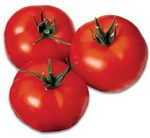|
Recommendations for the preparation and use of nutrient solutions for growing tomatoes on artificial substrates. (Recommendations are based on research and development at the University of Florida UF / IFAS State of Florida) and experience in growing tomatoes on artificial substrates in Israel.
For normal development, plants need 16 nutrients, which come with air, water and fertilizers.
These include:
- Carbon (C)
- Hydrogen (H)
- Oxygen (O)
- Phosphorus. (P).
- Potassium (K)
- Nitrogen (N)
- Sulfur (S)
- Calcium (Ca)
- Iron (Fe)
- Magnesium (Mg)
- Bromine (B)
- Manganese (Mn)
- Copper (Cu)
- Zinc (Zn)
- Molybdenum (Mo)
- Chlorine (Cl)
 The successful cultivation of plants can only be ensured if an оптимальная концентрация nutrients in the nutrient solution used for artificial substrates. Insufficient or excessive amounts of nutrients will lead to reduced yields. Excessive amounts can be particularly problematic as they can cause plant damage, cost overruns, and environmental pollution when the system is flushed out after the cultivation cycle is complete. The successful cultivation of plants can only be ensured if an оптимальная концентрация nutrients in the nutrient solution used for artificial substrates. Insufficient or excessive amounts of nutrients will lead to reduced yields. Excessive amounts can be particularly problematic as they can cause plant damage, cost overruns, and environmental pollution when the system is flushed out after the cultivation cycle is complete.
Elements such as oxygen, hydrogen, and carbon are obtained by plants from water and air. All other elements come with a nutrient solution during irrigation. If you grow tomatoes in greenhouses in winter, then you should also take care of the additional nutrition of the plants with carbon dioxide. In the southern regions, where even in the winter months ventilation is used in the greenhouses for at least a short time, there is no need to artificially add carbon dioxide.
The amount and ratio of nutrients change as the plants grow. In the initial stage of plant growth, small concentrations of nutrients are required, which must be increased as the plants grow and develop. One of the problems arises at the beginning of plant growth with an excess of nitrogen. If the nitrogen concentration is too high, the stems and leaves of plants may develop disproportionately, and the stems may also develop cracks and minor damage in which diseases such as wet rot may develop. Excessive nitrogen can also cause deformation of the first fruit and top rot. It is recommended at the first stage of plant growth to maintain a low concentration of nitrogen in the solution at a level (60-70 milligrams per liter).
High potassium content in the solution in the initial growing season is also undesirable since it inhibits the absorption of calcium and magnesium by the plant, which in turn retards the development of lower leaves and flower brushes, and also contributes to the development of apical rot on the first fruits.
These recommendations apply to all types of substrates (perlite, expanded clay, rock wool, coconut substrates) and most vegetable crops, including cucumbers and peppers. However, cucumbers require more nitrogen concentration at the start of the season than tomatoes.
To correctly and accurately determine the concentration of the nutrient solution, you need to take into account the chemical composition of the water you use for irrigation.
We recommend that you make a chemical analysis of the water in the laboratory and determine its acidity, pH, and the content of carbonates, sulfur, magnesium, calcium, and iron in it. When formulating solutions, it is necessary to take into account the content of calcium and magnesium in the water, as well as the acidity of the water, which may have to be adjusted by adding acid to the nutrient solution.
It should also be noted that the chlorine content in water can have a positive effect on the taste of tomatoes. An increased content increases the accumulation of sugars in fruits, although with a very high chlorine content, the yield of tomatoes decreases.
High content of iron and sulfur is undesirable since some bacteria use these substances for nutrition and a slimy coating forms on the inner surface of the drip irrigation tubes. If primitive or substandard tubing is used, the development of these bacteria can even lead to blockage of individual droppers and failure of the drip irrigation system.
Compilation of nutrient mixtures for mother liquids.
For fertigation, the so-called "mother liquors" are used, which contain high concentrations of fertilizers and are subsequently mixed with water supplied for irrigation in a ratio of 1: 100. Mixing is carried out using various devices that allow this mixing to be carried out in precisely defined proportions.
Several types of such devices are described on our website in the respective chapters on fertigation. Often, several stock solutions are used. This is due to the fact that not all fertilizers are chemically compatible and sometimes when mixed, insoluble sediment can form, with which part of the nutrients becomes inaccessible to plants. The pH is adjusted to the optimum.
The table below shows the recommended nutrient ratio for growing tomatoes, taking into account the phase of plant development.
|